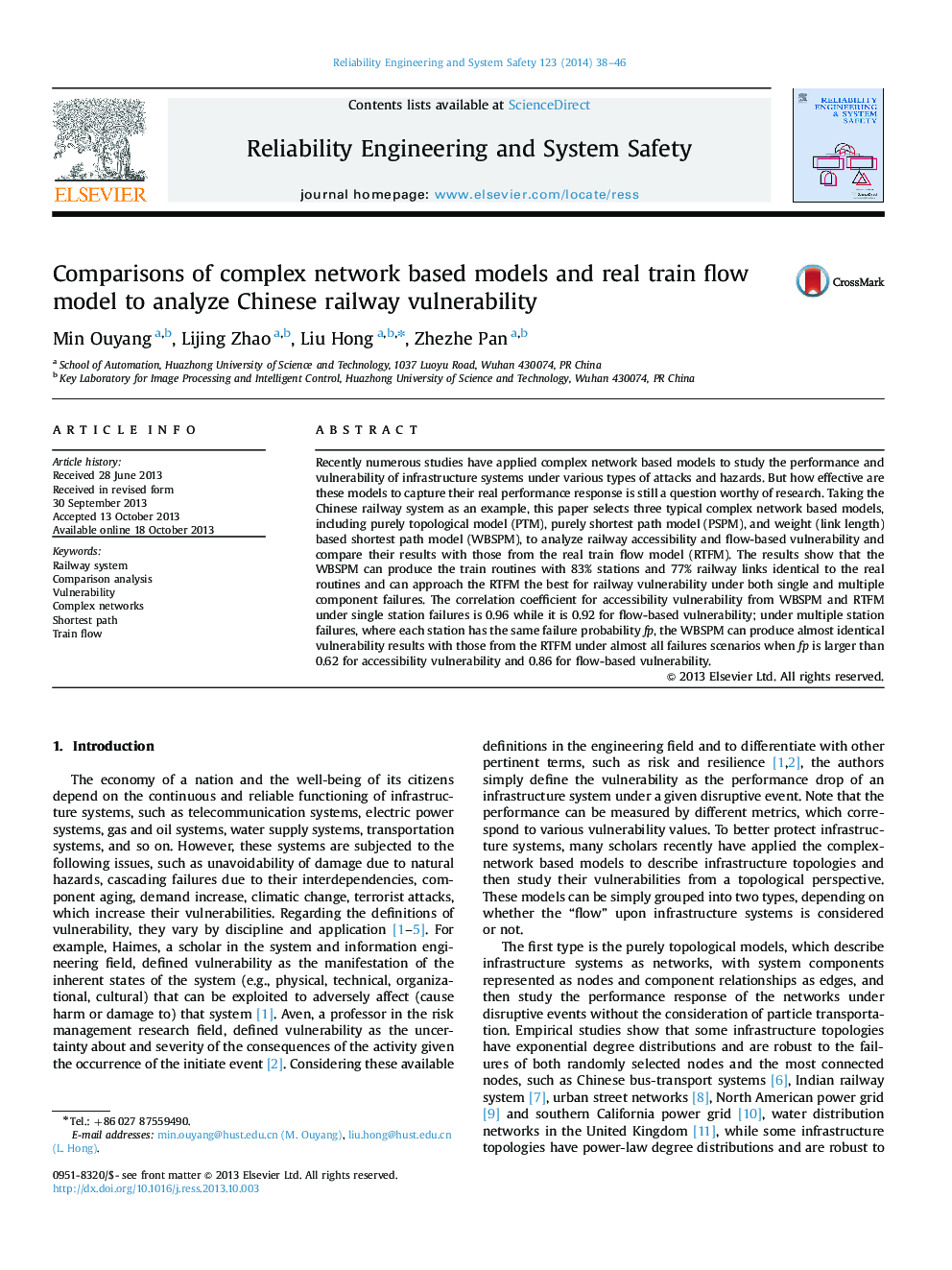| کد مقاله | کد نشریه | سال انتشار | مقاله انگلیسی | نسخه تمام متن |
|---|---|---|---|---|
| 806803 | 1468247 | 2014 | 9 صفحه PDF | دانلود رایگان |
Recently numerous studies have applied complex network based models to study the performance and vulnerability of infrastructure systems under various types of attacks and hazards. But how effective are these models to capture their real performance response is still a question worthy of research. Taking the Chinese railway system as an example, this paper selects three typical complex network based models, including purely topological model (PTM), purely shortest path model (PSPM), and weight (link length) based shortest path model (WBSPM), to analyze railway accessibility and flow-based vulnerability and compare their results with those from the real train flow model (RTFM). The results show that the WBSPM can produce the train routines with 83% stations and 77% railway links identical to the real routines and can approach the RTFM the best for railway vulnerability under both single and multiple component failures. The correlation coefficient for accessibility vulnerability from WBSPM and RTFM under single station failures is 0.96 while it is 0.92 for flow-based vulnerability; under multiple station failures, where each station has the same failure probability fp, the WBSPM can produce almost identical vulnerability results with those from the RTFM under almost all failures scenarios when fp is larger than 0.62 for accessibility vulnerability and 0.86 for flow-based vulnerability.
Journal: Reliability Engineering & System Safety - Volume 123, March 2014, Pages 38–46
